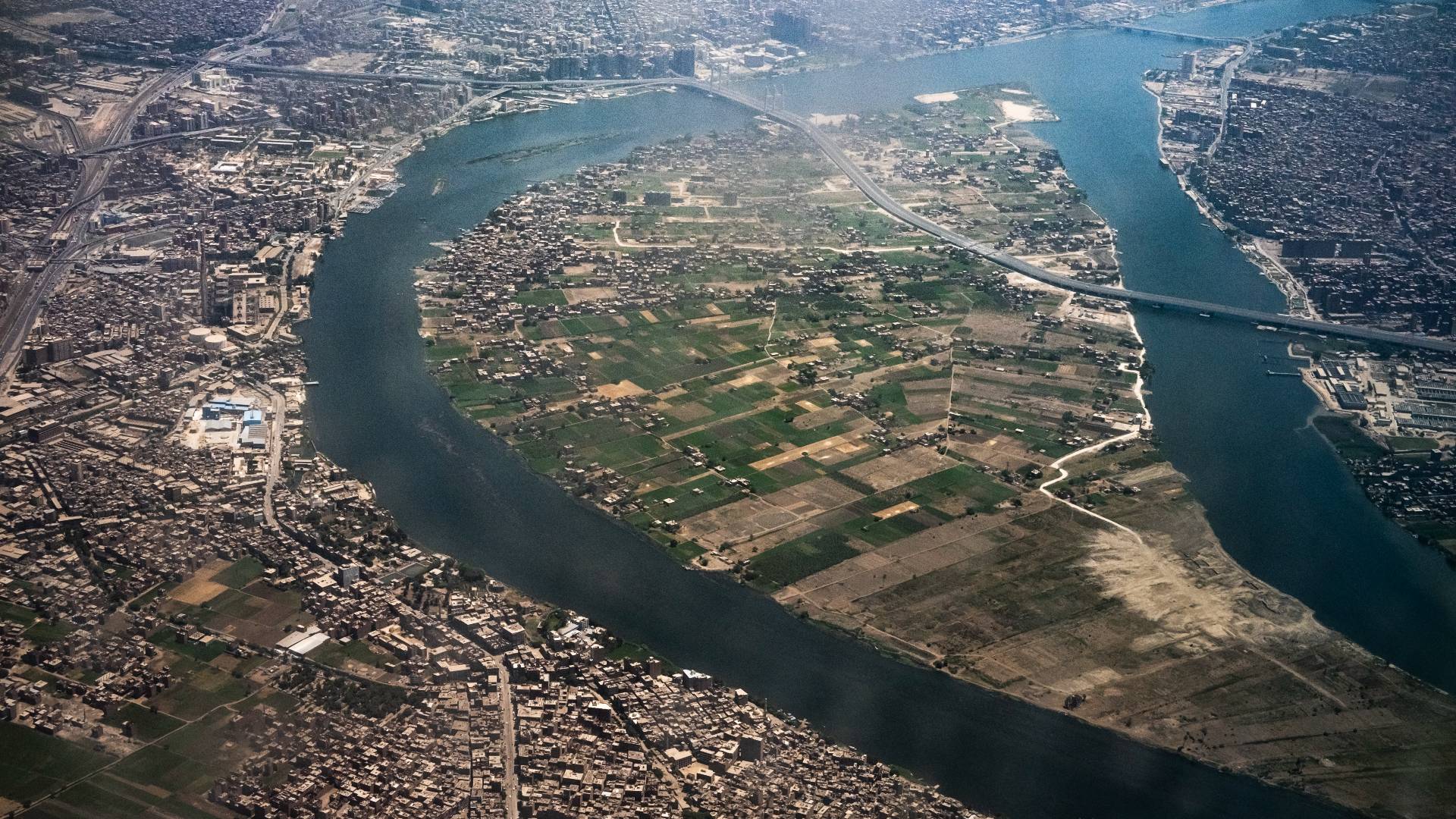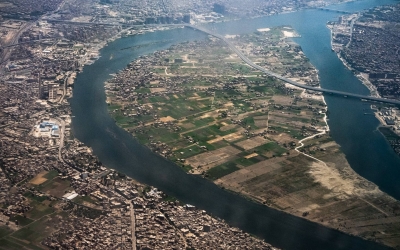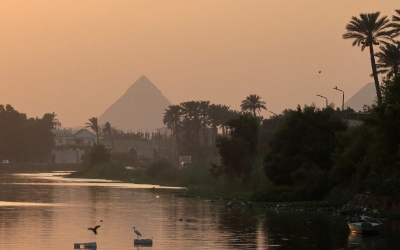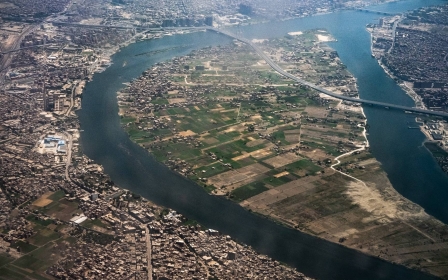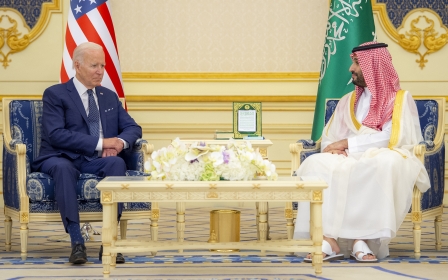Egypt: Residents of Cairo’s agricultural islands live under threat of displacement
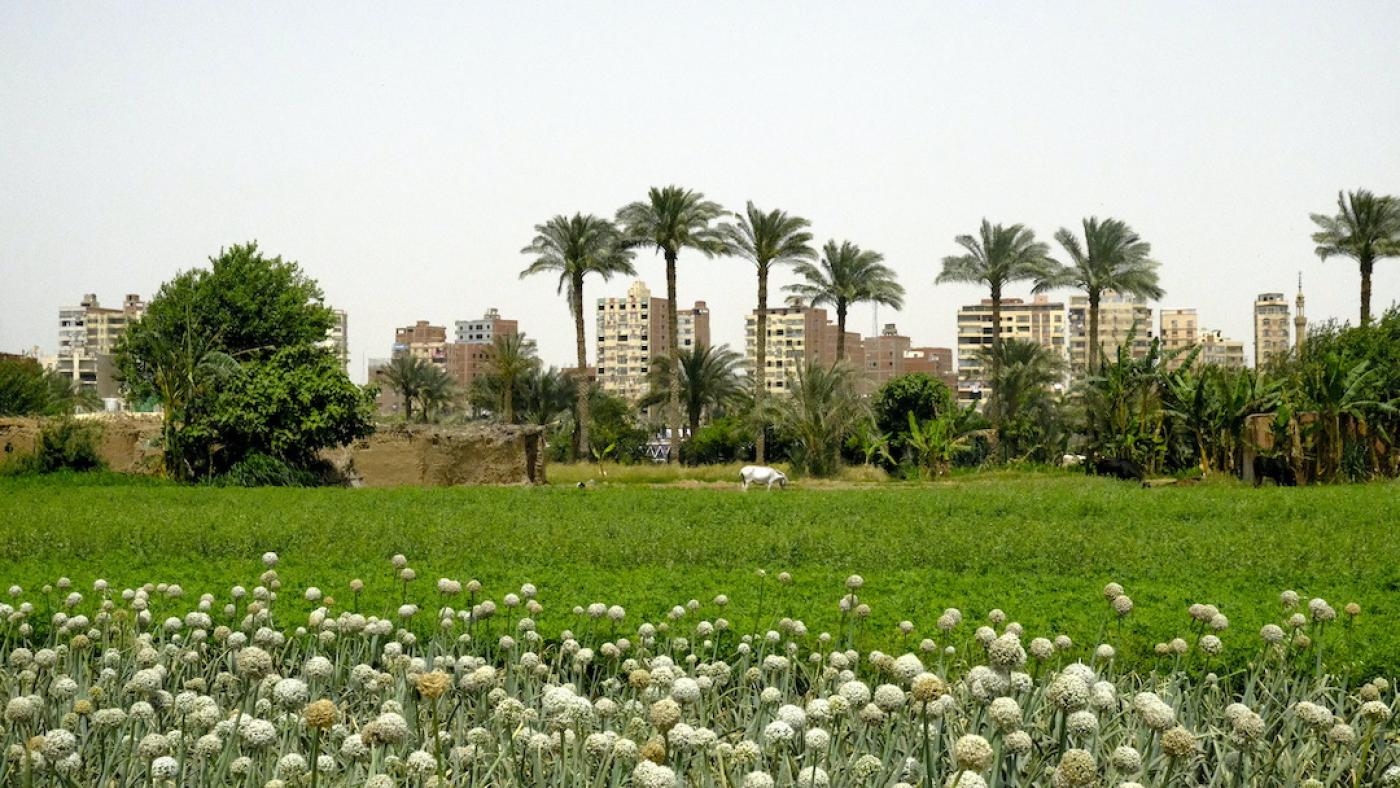
Between the two bustling banks of the river Nile as it flows through Cairo, one of the most densely populated and polluted cities in the world, time seems to stand still.
Hard on the shores of the Nile right in the epicentre of the city, Cairo’s agricultural islands – al-Warraq, al-Qursayah, and al-Dahab – are a haven of green in the heart of an urban jungle.
'Farming is in our blood, that’s just the way it is'
- Abir, 45
On Gezirat al-Dahab, the golden island, there is barely a single car to disturb the calm of the 20,000 inhabitants and cattle, the only exception being the ice cream van, with its following of children just out of school.
Here, the majority of the population work in the fields. “I don’t even know how long it’s been like this. Farming is in our blood, that’s just the way it is,” Abir, a 45-year-old mother of four tells Middle East Eye.
The only way to get to the island of Dahab is on a small sailboat called a felucca. The Egyptian government has never had any presence here, and there is no administrative centre, making it a land apart right in the heart of the city. Cairo’s imposing ring road straddles the island without providing any access to it.
New MEE newsletter: Jerusalem Dispatch
Sign up to get the latest insights and analysis on Israel-Palestine, alongside Turkey Unpacked and other MEE newsletters
The absence of any public services means inhabitants have to make regular trips to the city, for health care, schooling, or for admin.
Long preserved, this enclave where Christians and Muslims live side by side is now threatened by the government’s city planning projects.
With the recent destruction of the historic houseboats, a few kilometres away, the inhabitants of the agricultural islands, under pressure since 2000, are unnerved.
On Monday, the Egyptian security forces violently dispersed a protest on the island of al-Warraq, the biggest of Cairo’s three agricultural islands, resulting in seven arrests. Islanders were protesting the government’s plans to tear down their houses to make room for a series of Manhattan-style skyscrapers, called ‘Horus Island’.
The authorities came to the island to assess certain houses in the Hawd al-Qalamiyeh district which were marked for demolition. Earlier, at the end of July, a hospital, a youth centre, and two schools serving 6,500 children were destroyed.
In 2002, residents won a court case asserting their right of ownership over the island. Now, the government is claiming possession of 71 percent of its surface area.
Food autonomy
Regularly flooded by the waters of the Nile until the construction of the former Aswan Dam in 1902, rural exiles established informal settlements on Cairo’s agricultural islands and their descendants remain there to this day.
The islands belonged to the monarchy until 1953 when the Egyptian republic was established, after which date they were returned to the inhabitants.
Dotted with brick-built settlements, the island of al-Dahab has preserved its traditional farming methods.
The food crops – bananas, wheat, and corn - are grown without the use of pesticides, alongside fields of clover and alfalfa, which are used as cattle fodder.
Buffalo, cattle, and poultry live side by side with the inhabitants and form an integral part of the agricultural system of al-Dahab.
Any crops, principally food produce, that are harvested and not consumed by the islanders are sold on market stalls on the other side of the water.
“We grow wheat, alfalfa, vegetables. We want for nothing, we have everything we need. Often my husband goes to Maadi [a residential district in the south of Cairo] to sell part of our harvest” says islander Abir.
'Our neighbours have all been driven out'
Although they have preserved their ancestral way of life and culture until now, the agricultural islands of Cairo have been under land pressure since 2000, with the launch of major government building and redevelopment plans which, according to the government, would serve the ‘public good’.
In 2021, for example, the Egyptian government decided to extend the al-Mounib bridge, which had straddled al-Dahab island since the end of the 1990s and linked the suburb of Maadi with the working-class district of al-Mounib.
'The government has taken some of our land, land that’s our sole source of income. We were promised compensation, and we’re still waiting'
- Omar, al-Dahab resident
To reduce congestion on the existing four-lane throughway, and double its capacity, the population of the island living at the foot of the first bridge were forced out of their homes.
According to witness accounts of islanders, given to Middle East Eye, promised compensation has not materialised.
“That right there, that’s our house’ says Abdallah, age 13, pointing towards the giant arterial road looming overhead.
The house he is referring to was a cinder block building, the remains of which are still standing, but part of the roof is missing. “To build the bridge, they needed to demolish the second floor. My parents never received any compensation.”
Under the bridge, among giant advertising hoardings, an immense stretch of wasteland where the houses in ruins bear witness to what once was.
“We had lots of neighbours. Now, there’s no one any more, they’ve all been driven out” Abdallah continues.
Formerly the property of the locals, the land now belongs to the Transport Ministry.
A few metres from there, sheikh Omar and his wife Alia sit in front of their former house, at the south-west entrance of the island. They too have paid the price of the bridge extension.
“The government took our land, land that was our sole source of income. We were promised compensation, and we’re still waiting. If nothing materialises, we’ll go to court” says Omar.
A few years earlier, in July 2017, the island of al-Warraq – the biggest of Cairo’s three agricultural islands - hit the headlines after clashes between the islanders and the security forces.
The security forces had stormed the island to enforce an order authorising the demolition of more than 100 houses, which it claimed had been built on land belonging to the State.
The same year the Egyptian government announced plans for the redevelopment of 588 hectares of land to build a tourism centre designed to attract national and overseas investment.
The pressure on the residents of the agricultural islands is mounting, with an increasing number of redevelopment plans, filed under land development strategies, comprising expropriation measures.
“The centrality of these spaces makes them prime targets for urban redevelopment” Corten Pérez-Houis, a geography PhD candidate at Paris 1 University tells MEE.
The project “Greater Cairo 2050” established under the presidency of Hosni Moubarak, set out a plan to urbanise and transform the agricultural islands into tourism and real estate hubs. In this plan, which aspired to make Cairo a global showcase within Egypt, the island of al-Dahab was to be transformed into 2 green spaces, the so-called Dahab Island Parks.
Criminalisation of island residents
Although the project was officially abandoned the day after the 2011 revolution, it still influences and structures the current redevelopment plans.
At the end of July, the Egyptian government revealed its most recent redevelopment plan for the island of al-Warraq, which will be renamed Horus City. With a budget of 17.5 billion Egyptian pounds, the island will house eight residential areas, two ports, a central park as well as several shopping centres.
'The strategy of citing ecological concerns is nothing more than a pretence, mere window dressing that paves the way for the criminalisation of the inhabitants of the islands'
- Corten Pérez-Houis, geography PhD candidate
The ‘Egypt 2052’ plan, led by the GOPP (General Organisation for Urban Planning), the body with oversight for the planning of the Egyptian territory, is rooted in an a continuation of Moubarak’s time in power and envisages the eradication of the so-called ‘illegal’ settlements on the Nile.
“There’s an island in the middle of the Nile that stretches more than 525 hectares, where people have built on the land they appropriated. Now there are some 50,000 houses there, where does their sewage go? It goes into the water of the Nile, that we drink. This can’t be allowed to go on, with the harm it’s doing” said President Abdel Fattah al-Sissi in 2017, during a speech specifically addressing Cairo’s agricultural islands.
“Legally, there shouldn’t be anyone there”, he added.
However, the day before he gave that speech, 6 June 2017, a presidential decree excluded seventeen isles from the ‘environmental management area’ – which are protected natural spaces – including al-Dahab, al-Warraq and al-Qursaya.
“The strategy of citing ecological concerns is nothing more than a pretence, mere window-dressing that paves the way for the criminalisation of the inhabitants of the islands”, said Corten Pérez-Houis.
In reality, the Egyptian authorities aims to take control of these central spaces, which it considers under-exploited, and shut down the agricultural activities to make way for tourism and property projects.
According to official information sources on the redevelopment of the island of al-Warraq, the government is thinking big, with plans to build 94 residential tower blocks comprising 4,092 apartments, alongside several seven-star hotels, schools, youth centres, shopping centres, two marinas for yachts, a corniche along the river and a large park.
On 18 June 2022, the Ministry of Irrigation welcomed the eradication of 58,000 illegal properties on the banks of the Nile, from Upper Egypt to the Delta, as part of his plan to bring about ‘high-quality water resource management’.
These recent expulsions and expropriations "are just the first round, and will be followed by new governmental projects" said independent news source Mada Masr.
On the island of al-Dahab, residents are watching these events unfold with great unease, but remain determined: “we have been here for more than 100 years, and we’re not going anywhere” says sheikh Omar confidently.
*This article was first published in French.
Middle East Eye delivers independent and unrivalled coverage and analysis of the Middle East, North Africa and beyond. To learn more about republishing this content and the associated fees, please fill out this form. More about MEE can be found here.


